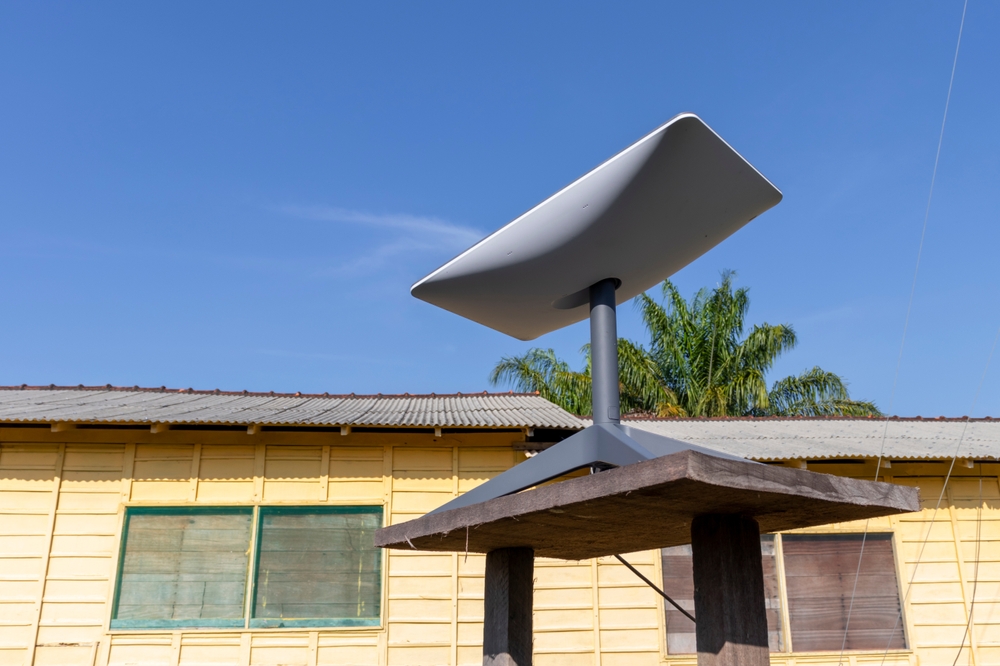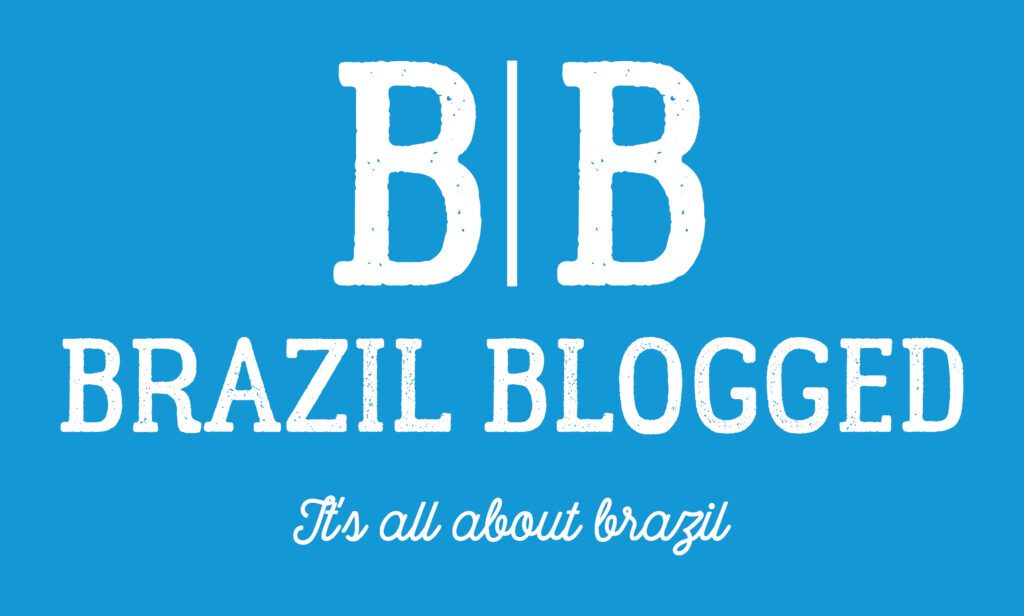Table of Content
ToggleIntroduction
Starlink, the satellite internet service from SpaceX, is making waves in Brazil’s telecommunications landscape. This innovative technology aims to bring high-speed internet to remote areas of the country that have long struggled with connectivity issues. Starlink plans to connect 19,000 rural schools in Brazil, potentially transforming education and digital access for thousands of students.
The arrival of Starlink in Brazil presents both opportunities and challenges. While it promises to bridge the digital divide in hard-to-reach regions, it also faces regulatory hurdles and competition from existing providers. The service’s performance and reliability in Brazil’s diverse geographic conditions will be crucial factors in its success.
As Starlink expands its presence in Brazil, it could have significant impacts on the country’s economy and society. Improved internet access may boost productivity in rural areas and open up new possibilities for remote work and education. However, questions remain about the long-term effects on local internet providers and the broader telecommunications market.
Key Takeaways
- Starlink aims to provide internet access to underserved areas in Brazil
- The service faces regulatory and technical challenges in the Brazilian market
- Improved connectivity could have wide-ranging impacts on Brazil’s economy and society
Overview of Starlink in Brazil
Starlink aims to bring high-speed internet to Brazil’s underserved areas. The service has made progress in expanding its reach across the country since its initial launch.
Expanding Connectivity with SpaceX’s Vision
Starlink, SpaceX’s satellite internet project, sees Brazil as a key market for growth. The company plans to use its network of low Earth orbit satellites to connect remote parts of Brazil. This technology could help bridge the digital divide in rural areas.
Elon Musk visited Brazil to discuss Starlink’s plans. The goal is to provide internet access to schools and health centersin the Amazon. Starlink faces competition from Amazon’s Project Kuiper, which also aims to offer satellite internet.
Current Status and Availability
Starlink began its service in Brazil in early 2022. The company got approval from Brazil’s telecom regulator to operate. This allowed Starlink to start offering its internet service to customers.
The service is not yet available everywhere in Brazil. Starlink is slowly expanding its coverage area. Users can check the Starlink website to see if their location is eligible.
Starlink needs ground stations in Brazil to work well. These stations connect the satellites to the wider internet. The company is building more of these stations to improve service quality and reach.
Technical Aspects of Starlink’s Services
Starlink uses advanced satellite technology to provide internet access. The system relies on a network of satellites and ground stations to deliver high-speed connectivity.
Satellite-Internet Service Infrastructure
Starlink’s network consists of thousands of small satellites in low Earth orbit. These satellites communicate with user terminals on the ground. The terminals are small dish antennas that users install at their homes or businesses.
The satellites orbit much closer to Earth than traditional communication satellites. This allows for faster internet speeds and lower latency. Starlink uses laser links between satellites to relay data quickly across its network.
Ground stations connect the satellite network to the wider internet. These stations are placed strategically around the world. They act as gateways between Starlink’s space-based network and terrestrial fiber networks.
Performance and Subscription Models
Starlink aims to provide high-speed internet to areas with limited options. The service can offer download speeds of 100-200 Mbps in many locations. Latency is typically under 50 milliseconds, which is good for most online activities.
Starlink offers a standard subscription model for residential users. This includes the antenna hardware and a monthly service fee. Business plans with higher speeds and priority support are also available.
The service works best in areas with a clear view of the sky. Obstructions like trees or tall buildings can impact performance. Starlink continues to improve its network as it launches more satellites and refines its technology.
Regulatory Challenges and Legal Framework
Starlink faces legal and regulatory hurdles in Brazil. The company must navigate complex telecommunications rules and court decisions to operate its satellite internet service.
Brazilian Telecommunications Regulator (ANATEL)
ANATEL, Brazil’s telecommunications regulator, plays a key role in Starlink’s operations. The agency requires Starlink to obtain a license before offering services in the country. This process involves meeting technical standards and following Brazilian laws.
ANATEL has strict rules for satellite operators. These include:
- Spectrum allocation
- Service quality standards
- Consumer protection measures
Starlink must comply with these regulations to maintain its license. The company works closely with ANATEL to ensure it meets all requirements.
Supreme Court Involvement and Sanctions
Brazil’s Supreme Court has become involved in Starlink’s operations. Justice Alexandre de Moraes ordered sanctions against the company. This action came after concerns about Starlink’s potential use for spreading misinformation.
The court’s decision impacts Starlink’s ability to operate freely. It must now:
- Follow strict content moderation rules
- Cooperate with legal authorities
- Potentially limit certain users’ access
Starlink is exploring legal options to address these challenges. The company aims to balance court orders with its commitment to providing internet access.
Market Impact and Economic Considerations
Starlink’s entry into Brazil’s internet market is shaking up the industry. It brings new opportunities and challenges for businesses and consumers alike.
Competition with Traditional Internet Providers
Starlink poses a threat to established internet providers in Brazil. Its satellite-based service can reach remote areas where traditional infrastructure is lacking. This gives Starlink an edge in rural regions.
Many Brazilians have limited internet options. Starlink’s arrival increases competition. This could lead to lower prices and better service from all providers.
Traditional companies may need to improve their offerings to keep customers. Some are already expanding fiber networks in response. Others are lowering prices or increasing data caps.
Starlink’s impact varies by region. In cities with good existing coverage, it may have less effect. But in underserved areas, it could be a game-changer.
Potential for Economic Growth
Starlink could boost Brazil’s economy in several ways. Better internet access can increase productivity and create new business opportunities.
Remote work becomes more viable with reliable high-speed internet. This could bring jobs to rural areas and smaller cities. It may also attract international companies looking to hire Brazilian talent.
E-commerce could grow as more people gain internet access. This opens new markets for Brazilian businesses. It also allows rural producers to sell directly to consumers.
Education and healthcare may improve through online services. This could lead to a more skilled workforce and better health outcomes. Both factors contribute to economic growth.
Starlink’s presence may attract other tech investments to Brazil. This could help build a stronger digital economy in the country.
Starlink’s Role in Brazilian Society
Starlink has become a significant player in Brazil’s digital landscape. The satellite internet service affects education and public discourse in the country.
Contribution to Educational Access
Starlink provides internet access to remote Brazilian schools. This helps students in rural areas learn online. Many schools now use Starlink for:
- Virtual classes
- Online research
- Educational videos
Teachers can now give lessons to students far away. This improves education quality in isolated regions. Some schools report faster internet speeds with Starlink. This allows for smoother video calls and faster downloads.
Starlink’s impact goes beyond just schools. Libraries and community centers also use the service. This gives more people a chance to learn new skills online.
Influence on Democracy and Public Discourse
Starlink affects how Brazilians get news and share ideas. More people can now join online discussions about politics. This includes those in areas with poor internet before.
The service helps fight digital gaps between cities and rural zones. More equal internet access can lead to:
- Better-informed voters
- More diverse voices in debates
- Easier fact-checking of claims
But Starlink also brings new challenges. Fast internet can spread false info quickly. Brazil now faces questions about how to manage this new digital space.
Some worry about Starlink’s control of internet access in Brazil. The company’s role in the country’s internet market raises concerns about information control.
User Experience and Customer Adoption
Starlink’s entry into Brazil has sparked interest among diverse user groups. Early adopters report mixed experiences with the satellite internet service, highlighting both advantages and challenges.
Customer Demographics and Usage Trends
Starlink users in Brazil span various regions, from urban centers to remote rural areas. Many early adopters are tech-savvy individuals and small businesses seeking alternatives to traditional internet providers. Rural customers, in particular, have shown keen interest in Starlink’s promise of high-speed internet in underserved areas.
Usage trends indicate that customers primarily use Starlink for basic internet tasks like browsing and streaming. Some users report lower throughput compared to terrestrial networks, which may impact heavy bandwidth activities.
Brazilian authorities are monitoring Starlink’s growth, especially its potential to bridge the digital divide in the Amazon rainforest region.
Feedback from Customers in Brazil
Customer feedback in Brazil has been mixed. Many users praise Starlink’s ability to provide internet access in previously unserved locations. They appreciate the relatively easy setup process and the potential for improved connectivity.
However, some customers have reported concerns:
- Inconsistent speeds during peak hours
- Weather-related interruptions
- Higher costs compared to traditional providers
Despite these challenges, many users express optimism about Starlink’s future improvements. They value the company’s efforts to expand coverage and enhance service quality.
Some customers have suggested that Starlink could better tailor its offerings to meet specific Brazilian needs, such as more Portuguese-language support and localized content.
Partnerships and Collaborations
Starlink’s expansion in Brazil involves strategic partnerships with local players and alliances beyond telecommunications. These collaborations aim to boost internet connectivity and drive technological advancements across the country.
Working with Local Players
Starlink has teamed up with key Brazilian companies to strengthen its presence. A notable partnership with Elo, a major Brazilian payment system, aims to improve internet access for remote transactions.
The company also works closely with local internet service providers. These partnerships help Starlink reach more customers in rural areas. They combine Starlink’s satellite technology with existing ground infrastructure.
Brazilian telecom firms play a crucial role too. They provide customer support and handle local regulations. This teamwork ensures smooth operations and better service for Brazilian users.
Strategic Alliances Beyond Telecommunications
Starlink’s partnerships extend beyond internet providers. The company collaborates with the Brazilian government on space technology initiatives. This includes sharing satellite data for environmental monitoring and disaster response.
In the private sector, Starlink works with Brazilian tech firms. These alliances focus on developing new applications for satellite internet. Areas of interest include:
- Smart agriculture
- Remote healthcare
- Education technology
Starlink also partners with industry leaders in aerospace and manufacturing. These collaborations aim to boost local production of satellite components. This strategy helps create jobs and transfer technology to Brazil’s growing space sector.
Comparative Analysis
Starlink’s performance in Brazil can be evaluated against other satellite internet options and global perspectives. These comparisons reveal key insights into Starlink’s strengths and areas for improvement in the Brazilian market.
Starlink vs. Other Satellite Internet Services
Starlink offers faster speeds and lower latency compared to traditional satellite internet in Brazil. Recent data showsStarlink outperforms cellular last-mile connections in many countries. This advantage is crucial for rural Brazilian areas with limited internet options.
Industry leaders note Starlink’s innovative low Earth orbit satellite constellation as a key differentiator. This technology allows for quicker data transmission and improved reliability compared to older geostationary satellites.
Expert analysis suggests Starlink’s performance may vary based on factors like weather and network congestion. Users in densely populated Brazilian cities might experience slower speeds during peak hours.
International Perspectives
Brazil is among the top 5 countries for Netflix viewing over Starlink, indicating strong adoption and usage. This suggests Starlink is meeting a significant need for high-speed internet access in Brazil.
Compared to other countries, Brazil’s vast territory and diverse geography present unique challenges for Starlink coverage. Remote Amazon regions may see different performance levels than coastal urban areas.
VPN use over Starlink in Brazil aligns with global trends, as users seek additional privacy and access to geo-restricted content. This practice is common across Starlink’s international user base.
Social and Ethical Considerations
Starlink’s arrival in Brazil brings new challenges for managing online content and protecting users. The increased internet access raises concerns about the spread of false information and harmful speech on social platforms.
Managing the Spread of Misinformation
Starlink’s high-speed internet access in Brazil may increase the spread of false information online. Social media platforms like X face pressure to combat misinformation.
Brazil’s Supreme Court has taken action against misleading content. Justice Alexandre de Moraes ordered investigations into disinformation networks.
Fact-checking initiatives have grown to address false claims. Media literacy programs aim to help Brazilians spot unreliable sources.
Tech companies are testing AI tools to detect misleading posts. However, these systems still struggle with nuanced or local content.
Experts argue for transparent content moderation policies as internet access expands. Clear rules can help balance free speech and public safety.
Addressing Risks of Hate Speech Online
Wider internet access via Starlink may expose more Brazilians to online hate speech. Social platforms face challenges in moderating harmful content at scale.
Brazil’s laws prohibit racist and discriminatory speech. However, enforcing these rules on global platforms is complex.
X and other sites use automated systems to flag potential hate speech. But these tools often miss context or local slang.
Human moderators review flagged content. Yet the volume of posts makes thorough checks difficult.
Some argue for stricter penalties on platforms that fail to remove hate speech quickly. Others worry this could lead to over-censorship.
Community reporting features help identify harmful posts. But coordinated attacks can abuse these systems.
Experts suggest improved AI systems to detect subtle forms of hate speech. Combining tech and human review may offer the best approach.
Content and Access Policy
Starlink’s expansion into Brazil raises important questions about content regulation and legal responsibilities. The service faces challenges balancing open internet access with local laws and social concerns.
Censorship Debates and Social Media
Starlink’s arrival in Brazil sparks debates on content moderation. Some worry about unrestricted access to social media platforms like Social Network X. Others see it as a chance for free expression.
Brazil’s internet laws require content filtering. This clashes with Starlink’s global network approach. The company must decide how to handle local restrictions.
User-generated content poses risks. Misinformation and hate speech are key concerns. Starlink needs clear policies to address these issues while respecting free speech.
Legal Implications for Service Providers
As an internet provider, Starlink faces legal duties in Brazil. The company must appoint a Legal Representative to interact with authorities.
Brazil’s laws hold providers responsible for illegal content. Starlink may need to remove or block access to certain materials. Failure to comply could result in fines or sanctions.
Data privacy is another crucial area. Starlink must protect user information and comply with Brazil’s data protection regulations. This includes rules on data storage and sharing.
Looking to the Future
Starlink in Brazil is poised for significant advancements. New technologies and expanding coverage will shape its growth in the coming years.
Innovation and New Technologies
Starlink aims to boost its satellite network over Brazil. The company plans to launch more advanced satellites with improved capabilities. These upgrades will increase internet speeds and reduce latency for users across the country.
One key focus is enhancing service in remote areas of Brazil. This includes the Amazon rainforest region, where traditional internet infrastructure is lacking. Starlink is working on satellites that can better penetrate dense foliage.
The company is also developing more affordable user terminals. This will make the service accessible to a wider range of Brazilians.
Predictions for Growth and Adaptation
Experts predict rapid growth for Starlink in Brazil over the next five years. The service is expected to reach over 1 million users by 2028. This expansion will likely impact both urban and rural areas.
In cities like Rio de Janeiro, Starlink may become a popular alternative to traditional broadband. Rural areas are expected to see the biggest impact, with many gaining high-speed internet access for the first time.
The political landscape may influence Starlink’s growth. While former president Jair Bolsonaro supported Starlink’s expansion, future administrations’ policies could affect its progress.
Trusted journalism will play a crucial role in monitoring Starlink’s impact on Brazil’s digital divide. Reporters will need to track the service’s expansion and its effects on different communities.
Frequently Asked Questions
Starlink’s expansion into Brazil has sparked interest among potential subscribers. These questions address key aspects of service availability, costs, performance, and setup requirements for Brazilian customers.
How can I subscribe to Starlink internet services in Brazil?
Interested customers can visit Starlink’s official website and enter their address to check availability. If service is available, they can place an order online. Starlink may have a waitlist in some areas of Brazil due to high demand.
What are the costs associated with installing Starlink internet in Brazil?
Starlink equipment costs include the satellite dish, router, and mounting hardware. Monthly service fees apply. Prices may vary based on location within Brazil. Customers should check the Starlink website for current pricing in their area.
What are the expected internet speeds and reliability of Starlink service in Brazilian regions?
Starlink aims to provide high-speed internet across Brazil. Speeds can vary based on factors like network congestion and satellite coverage. Users typically experience faster speeds than many traditional broadband options, especially in rural areas.
Are there any specific requirements to set up Starlink internet in a Brazilian residence?
Starlink requires a clear view of the sky for optimal performance. Users need to install the dish in an unobstructed area, such as a roof or yard. The setup process is designed to be user-friendly, with step-by-step instructions provided.
How does Starlink internet performance compare to traditional ISPs in Brazil?
Starlink often outperforms traditional ISPs in rural and underserved areas of Brazil. In urban areas with robust fiber networks, the difference may be less noticeable. Starlink’s low-Earth orbit satellites can provide lower latency compared to traditional satellite internet.
What is the coverage area of Starlink’s satellite internet service in Brazil?
Starlink aims to provide coverage across Brazil, including remote and rural areas. The service is expanding its coverage as more satellites are launched. Availability may vary by region, with some areas having full coverage while others are still in progress.












